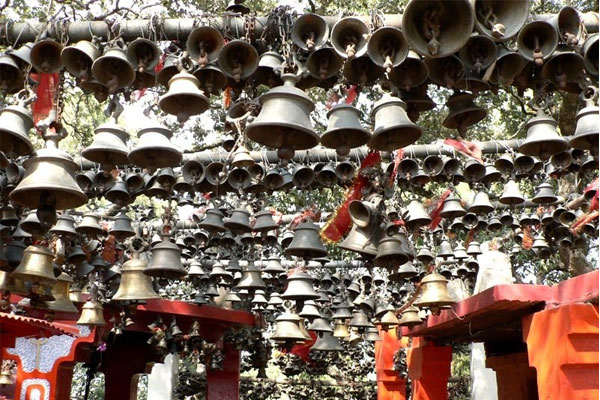Importance of bells in Hindu Temple
Posted on 21/08/2014 I by: Priya Sharma

Most of the old temples have large bell at the entrance of the temple and you need to ring it before you enter temple. Bells are important symbols in Hindu worship. Each temple, or mandir, generally hangs at least one metal bell at its entrance for devotees to announce their presence to the Hindu deities. Priests or devotees ring more bells within the temple during worship in order to invoke the gods.
Significance
Temple bells come in a variety of shapes, sizes and metals, though brass is common. The bells’ chimes are believed to replicate the sound of Aum, the all-seeing and all knowing presence across the universe that is synonymous with the name of God.
Enternace
Some Hindus consider it proper to enter the temple by first stepping in with their right foot, indicating that they are entering with the right frame of mind. Upon entering, the devotee usually sees a suspended bell that they ring for various reasons: Its tone announces their presence and summons the temple’s gods; the ringing clears the devotee’s mind in order to focus on their worship.
Worship
The primary activity in a Hindu temple is the worship service known as puja. The bell used during puja is known as a ghanta and is said to engage all of the devotee’s senses. Similar to the bell at a temple entrance, bells are rung during puja in order to summon a Hindu deity. Hindu priests often do this while conducting other worship activities, such as passing a lit lantern, making an offering and intoning chants.
Mantra
Hindu worship often involves repetitive chanting. The following bell-related mantra is repeated in temples and homes in order to create the right ambience for worship: 'Aagamaarthamtu devaanaam gamanaarthamtu rakshasaam Kurve ghantaaravam tatra devataahvaahna lakshanam.' This roughly translates as: 'I ring this bell indicating the invocation of divinity, so that virtuous and noble forces enter my home and heart.

